family
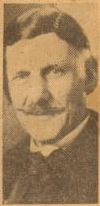
 Ian Holbourn born John Bernard Stoughton Holbourn on November 5, 1872, to Alfred Holborn and Mary Jane Stoughton. John Bernard, who later went by Ian, which is the Scottish version of John, was the eldest of their two children. His mother died when he was very young and due to his father’s ill health, the children were sent to live with their stern Aunt Augusta. As a young man he became fond of the remote Scottish island of Foula, which he succeeded in purchasing around 1900, thus becoming its laird (owner of a large, long-established Scottish estate). He was also a professor and lecturer for the University of Oxford, and a writer.
Ian Holbourn born John Bernard Stoughton Holbourn on November 5, 1872, to Alfred Holborn and Mary Jane Stoughton. John Bernard, who later went by Ian, which is the Scottish version of John, was the eldest of their two children. His mother died when he was very young and due to his father’s ill health, the children were sent to live with their stern Aunt Augusta. As a young man he became fond of the remote Scottish island of Foula, which he succeeded in purchasing around 1900, thus becoming its laird (owner of a large, long-established Scottish estate). He was also a professor and lecturer for the University of Oxford, and a writer.
Avis Gertrude Dolphin was born on August 24, 1902, in Rotherham, Yorkshire, England to John Henry Dolphin and Alice Schofield Dolphin. Avis as twelve years old when her parents booked passage for her and two nurses, Sarah Smith and Hilda Ellis, on RMS Lusitania, bound for England where Avis was to attend school while living with her grandparents. It was on that voyage that Ian Holbourn and Avis Dolphin would cross paths and their lives would be forever changed.
Ian befriended the young girl, who seemed to need a friend at the time. They talked of many things from the journey they were on to her upcoming school. She told Ian in one of their talks, that books for girls were uninteresting. Ian, an author, wrote his book “The Child of the Moat, A Story for Girls, 1557 A.D.” for Avis in 1916. The two would be friends for the rest of Ian’s life, but only because they were both destined to survive the sinking of the ship they met on. RMS Lusitania was hit by a torpedo launched from a German U-boat on May 7, 1915. That afternoon, RMS Lusitania was 11 miles off the southern coast of Ireland inside the declared war zone. The torpedo triggered in internal explosion. The damage caused her to sink in 18 minutes, killing 1,197 passengers and crew. Eventually, 289 bodies were recovered or found from the wreck. Only 761 people survived, among them, Avis Dolphin and Ian Holbourn. Ian was married to Marion Constance Archer-Shepherd, 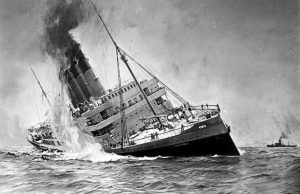
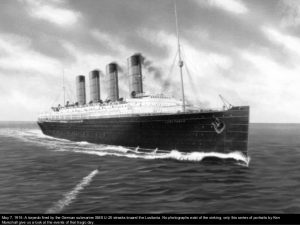 and together they had three sons. Ian died on September 15, 1935. Avis was introduced to journalist Thomas Foley during a visit to Holbourn’s home, and the two were married in 1926. Avis lived the remainder of her life in Snowdonia, Wales and died of natural causes in Meirionydd, which is a coastal and mountainous region of Wales, at the age of 93 on February 5, 1996.
and together they had three sons. Ian died on September 15, 1935. Avis was introduced to journalist Thomas Foley during a visit to Holbourn’s home, and the two were married in 1926. Avis lived the remainder of her life in Snowdonia, Wales and died of natural causes in Meirionydd, which is a coastal and mountainous region of Wales, at the age of 93 on February 5, 1996.
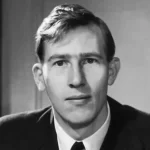
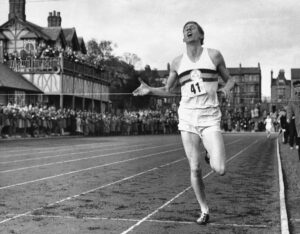 World records come and world records go. Some take longer to beat than others. One record had stood for nine years. It was a record involving human endurance, and after a while, many believed that the recorded for the four-minute mile seemed like it just couldn’t be broken. so many athletes had tried and failed to break the record of 4 minutes 1.3 seconds set by Gunder Hagg of Sweden in 1945. Nevertheless, a hard to break record is a great motivator, and this one drew lots of athletes who were determined to break that record.
World records come and world records go. Some take longer to beat than others. One record had stood for nine years. It was a record involving human endurance, and after a while, many believed that the recorded for the four-minute mile seemed like it just couldn’t be broken. so many athletes had tried and failed to break the record of 4 minutes 1.3 seconds set by Gunder Hagg of Sweden in 1945. Nevertheless, a hard to break record is a great motivator, and this one drew lots of athletes who were determined to break that record.
By the early 1950s, and because so many athletes had tried and failed to run a mile in less than four minutes, people began to believe that it was a physical, and maybe even a phycological impossibility. Still, that seldom stops people from trying. In fact, in the early 1950s, several runners had dedicated themselves to being the first to cross into the three-minute zone. The goal became such a big deal that the crowds actually held their breath waiting for the time on a run to be announced. I’m sure that each failure was a colossal disappointment.
On May 6, 1954, in Oxford, England, 25-year-old medical student Roger Bannister finally succeeded in breaking track and field’s most notorious barrier…the four-minute mile. Bannister, who was born in Harrow, England, in 1929, was a top mile-runner while a student at the University of Oxford and at Saint Mary’s Hospital Medical School in London. He won British championships in the mile run, in 1951 and 1953. As he prepared himself for his first competitive race of the 1954 season, Bannister researched the mechanics of running and trained using new scientific methods he developed through his research.
Bannister came to the Iffley Road track in Oxford on May 6, 1954, for the annual match between the Amateur Athletic Association and Oxford University. Bannister was running for the Amateur Athletic Association and against his alma mater, Oxford University. The conditions that day were far from ideal. It had been windy and raining, and a considerable crosswind was still blowing across the track as the mile race was set to begin. At precisely 6pm, the starting gun was fired. Bannister had planned the race very carefully. He was aided by Chris Brasher, a former Cambridge runner who acted as a pacemaker. For the first half-mile, Brasher led the field, with Bannister a close second. Then, another runner took up the lead and reached the three-quarter-mile mark in 3 minutes .4 seconds. Bannister passed the mark at 3 minutes .7 seconds. Then, as he had planned, Bannister took the lead with about 350 yards to go and sprinted past an unofficial timekeeper at the 1,500-meter mark in 3 minutes 43 seconds, thus equaling the world’s record for that distance. Then, Bannister poured it on, throwing in all his reserves. When he broke the tape the time was 3 minutes 59.4 seconds. The announcer didn’t even get the whole time out before the crown erupted. All they needed to hear was “three minutes.” The rest didn’t matter, because the record had been broken!! Bannister’s official time was 3 minutes 59.4 seconds. It was very close to the 4-minute mark, but that didn’t matter, because .6 seconds still made it under four minutes. As soon as the first part of his score was the crown went wild!!
Bannister went on to win British and Empire championships in the mile run, and the European title in the 1,500-meter event in 1954. That was all it took for him. Going out on top, Bannister retired from athletic competition at the end of 1954, to pursue his medical career full time. He wrote a book about his experience in 1955, called The Four Minute Mile. Bannister went on to earn a medical degree from Oxford and became a neurologist. In 1955, Bannister married the Swedish artist Moyra Elver Jacobsson in Basel, Switzerland. Together they had four children…Carol Bannister (born 1957), Clive Bannister (born 1959), Thurstan Bannister (born 1960), and Charlotte Bannister (born 1963). In 1975, he was knighted by Queen Elizabeth II. He died of pneumonia at the John Radcliffe Hospital in Oxford on March 3, 2018.
As for his world record in the mile, well it did not stand long. The record continued to be lowered with 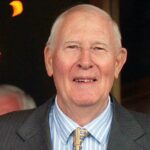
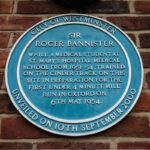 increasingly controlled climatic and surface conditions, more accurate timing devices, and improvements in training and running techniques. A “sub-four” mile run is still a notable time, but top international runners now routinely accomplish the feat. These days, the “mile race” has been replaced in the Olympics, because the mile is not a metric measurement. Nevertheless, it continues to be run by many top runners as a glamour event. While the sub-four race time is now a rather common time for the mile, no one else can claim the first-time record, because that belongs exclusively to Roger Bannister.
increasingly controlled climatic and surface conditions, more accurate timing devices, and improvements in training and running techniques. A “sub-four” mile run is still a notable time, but top international runners now routinely accomplish the feat. These days, the “mile race” has been replaced in the Olympics, because the mile is not a metric measurement. Nevertheless, it continues to be run by many top runners as a glamour event. While the sub-four race time is now a rather common time for the mile, no one else can claim the first-time record, because that belongs exclusively to Roger Bannister.

 I have been very privileged to have had two men that I called “Dad” who were both among the kindest men I have ever met. My father-in-law, Walt Schulenberg became my second “Dad” when I married my husband, Bob Schulenberg in 1975. He was a hardworking man, almost to the point of being a workaholic, but that was common for the times and the bigger families that people had. My in-laws, Walt and Joann had six children, of which my husband was the third child and first boy. In big families, there is, by necessity, a certain amount of joking and teasing. It’s really the only way to make sure the kids aren’t always fighting. Everyone’s kids need to know how to hake a joke. They also, need to know how to tell one in good clean fun. Dad taught them well, as did my parents, so Bob and I were quite compatible in that way, as well as many others, of course.
I have been very privileged to have had two men that I called “Dad” who were both among the kindest men I have ever met. My father-in-law, Walt Schulenberg became my second “Dad” when I married my husband, Bob Schulenberg in 1975. He was a hardworking man, almost to the point of being a workaholic, but that was common for the times and the bigger families that people had. My in-laws, Walt and Joann had six children, of which my husband was the third child and first boy. In big families, there is, by necessity, a certain amount of joking and teasing. It’s really the only way to make sure the kids aren’t always fighting. Everyone’s kids need to know how to hake a joke. They also, need to know how to tell one in good clean fun. Dad taught them well, as did my parents, so Bob and I were quite compatible in that way, as well as many others, of course.
My father-in-law spent most of his childhood living on ranches and learned his work ethic there. When you are 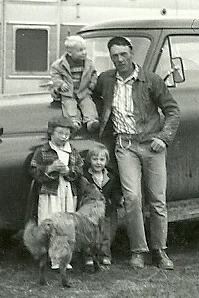
 raising cattle, there is little sleeping in until noon. As with most kids of that era, the workload was shared. The parents couldn’t be expected to take care of everything, especially when there are perfectly healthy kids who can help. He helped with chores around the house, and later with everything from feeding the animals to branding them. Over the years he raised some animals of their own, although not to the grand scale that he had grown up with. I was raised in town, so cows, chickens, rabbits, and the like were a little foreign to me. Nevertheless, if you put your mind to it, you can learn just about anything, and my in-laws were good teachers.
raising cattle, there is little sleeping in until noon. As with most kids of that era, the workload was shared. The parents couldn’t be expected to take care of everything, especially when there are perfectly healthy kids who can help. He helped with chores around the house, and later with everything from feeding the animals to branding them. Over the years he raised some animals of their own, although not to the grand scale that he had grown up with. I was raised in town, so cows, chickens, rabbits, and the like were a little foreign to me. Nevertheless, if you put your mind to it, you can learn just about anything, and my in-laws were good teachers.
Later in his life, my father-in-law moved my mother-in-law and their eldest daughter, Marlyce to town. While he no longer raised animals, he planted a garden in the back yard, from which my mother-in-law canned the vegetables. His also built a hobby barn, really just a tall and fairly large shed, where he could tinker around making different crafts. He made wooden toys and wind spinners. They graced his yard for the rest of his life, 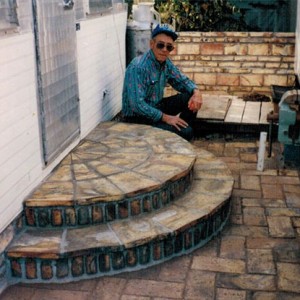
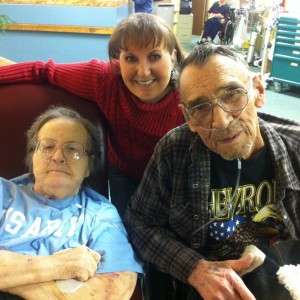 as well as may yards around town. People would see them and want to buy them. He also refurbished lawn chairs, actually making them far more beautiful than they had previously been. He was an accomplished contractor, though mostly just for himself and his family. Nevertheless, he did make so steps for people and a few other things over the years. His was a life well lived, and it makes me sad that he has been gone for eleven years now. Nevertheless, time marches on, and today I find that he did leave us eleven years ago today. I still miss him every day.
as well as may yards around town. People would see them and want to buy them. He also refurbished lawn chairs, actually making them far more beautiful than they had previously been. He was an accomplished contractor, though mostly just for himself and his family. Nevertheless, he did make so steps for people and a few other things over the years. His was a life well lived, and it makes me sad that he has been gone for eleven years now. Nevertheless, time marches on, and today I find that he did leave us eleven years ago today. I still miss him every day.
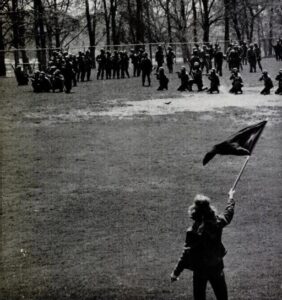 The Vietnam War was a volatile time in American history. When the war started, so did the draft. Many people protested, especially students. I suppose for them, it all felt so much closer to home, than for the older Americans. Still, the students were not alone in protesting. Many Americans agreed and protested too. The law allows for “peaceful” protesting, saying that it is “a constitutionally protected form of expression under the First Amendment in the United States. It falls under the right to free assembly, allowing every American to voice their opinions and advocate for change. However, a protest becomes a riot when one or more people within the group engage in criminal activity. This can include intentionally damaging property or causing physical harm to another person1. In other words, when a peaceful demonstration loses control and turns violent, it transitions from a protest to a riot.”
The Vietnam War was a volatile time in American history. When the war started, so did the draft. Many people protested, especially students. I suppose for them, it all felt so much closer to home, than for the older Americans. Still, the students were not alone in protesting. Many Americans agreed and protested too. The law allows for “peaceful” protesting, saying that it is “a constitutionally protected form of expression under the First Amendment in the United States. It falls under the right to free assembly, allowing every American to voice their opinions and advocate for change. However, a protest becomes a riot when one or more people within the group engage in criminal activity. This can include intentionally damaging property or causing physical harm to another person1. In other words, when a peaceful demonstration loses control and turns violent, it transitions from a protest to a riot.”
On May 2, 1970, a protest rally at Kent State University resulted in the National Guard troops being called out to suppress students who were now rioting in protest of the Vietnam War and the US invasion of Cambodia. As scattered protests continued the next day, they were dispersed by tear gas, and on May 4th class resumed at Kent State University. University officials put a ban of rallies, but it didn’t stop the rallies. By noon, some 2,000 people had assembled on the campus. The National Guard troops arrived and ordered the crowd to disperse, fired tear gas, and advanced against the students with bayonets fixed on their rifles. As is common among protesters, some refused to disperse, and even responded by throwing rocks and verbally taunting the troops.
As the situation escalated, and without firing a warning shot, 28 Guardsmen discharged more than 60 rounds  toward a group of demonstrators in a nearby parking lot, killing four and wounding nine, one of whom would be permanently paralyzed. The closest casualty was 20 yards away, and the farthest was almost 250 yards away. After a period of disbelief, shock, and attempts at first aid, angry students gathered on a nearby slope and were again ordered to move by the Guardsmen. Though they were prepared to stand and even die for their beliefs, faculty members were able to convince the group to disperse, and further bloodshed was prevented. The Kent State campus was closed for six weeks following the tragedy.
toward a group of demonstrators in a nearby parking lot, killing four and wounding nine, one of whom would be permanently paralyzed. The closest casualty was 20 yards away, and the farthest was almost 250 yards away. After a period of disbelief, shock, and attempts at first aid, angry students gathered on a nearby slope and were again ordered to move by the Guardsmen. Though they were prepared to stand and even die for their beliefs, faculty members were able to convince the group to disperse, and further bloodshed was prevented. The Kent State campus was closed for six weeks following the tragedy.
News of the shootings reverberated across the globe. It also led to protests on college campuses across the country. Just five days after the shootings, 100,000 people demonstrated in Washington, DC, both against the war and the killing of unarmed student protesters. The media put out photographs of the massacre, and the images became enduring images of the anti-war movement. A criminal investigation followed, and in 1974, at the end of the investigation, a federal court dropped all charges levied against eight Ohio National Guardsmen for their role in the Kent State students’ deaths. The decision was followed by outrage.
After the decision was made, the defendants issued a statement, “In retrospect, the tragedy of May 4, 1970, should not have occurred. The students may have believed that they were right in continuing their mass protest in response to the Cambodian invasion, even though this protest followed the posting and reading by the university of an order to ban rallies and an order to disperse. These orders have since been determined by the Sixth Circuit Court of Appeals to have been lawful.
Some of the Guardsmen on Blanket Hill, fearful and anxious from prior events, may have believed in their own 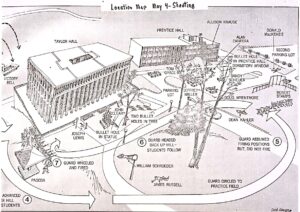 minds that their lives were in danger. Hindsight suggests that another method would have resolved the confrontation. Better ways must be found to deal with such a confrontation.
minds that their lives were in danger. Hindsight suggests that another method would have resolved the confrontation. Better ways must be found to deal with such a confrontation.
We devoutly wish that a means had been found to avoid the May 4th events culminating in the Guard shootings and the irreversible deaths and injuries. We deeply regret those events and are profoundly saddened by the deaths of four students and the wounding of nine others which resulted. We hope that the agreement to end the litigation will help to assuage the tragic memories regarding that sad day.” I agree, better ways must be found by both the protesters and the authorities.

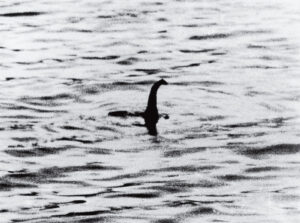 Over the years, I think most people have heard of the Loch Ness Monster. Most people have formed their own opinions as to what the monster, dubbed “Nessy” was. Many people have called it a hoax. Others have said that people imagined it. Still others thought it was a big fish or just a log. Whatever it was or is, the legend has endured for a long time now. In fact, the first “sighting” was reported on May 2, 1933. When the news broke, the newspaper, Inverness Courier told of a local couple who told of “an enormous animal rolling and plunging on the surface.” The story of the “monster” which was added by the Courier editor, becomes a media phenomenon, with London newspapers sending correspondents to Scotland and a circus offering a 20,000 pound sterling reward for capture of the beast.
Over the years, I think most people have heard of the Loch Ness Monster. Most people have formed their own opinions as to what the monster, dubbed “Nessy” was. Many people have called it a hoax. Others have said that people imagined it. Still others thought it was a big fish or just a log. Whatever it was or is, the legend has endured for a long time now. In fact, the first “sighting” was reported on May 2, 1933. When the news broke, the newspaper, Inverness Courier told of a local couple who told of “an enormous animal rolling and plunging on the surface.” The story of the “monster” which was added by the Courier editor, becomes a media phenomenon, with London newspapers sending correspondents to Scotland and a circus offering a 20,000 pound sterling reward for capture of the beast.
The sighting, which actually occurred in April 1933 sighting was reported in the newspaper on May 2nd. After that, interest steadily grew, especially after another couple claimed to have seen the animal on land. I don’t  recall ever having heard of the Loch Ness Monster being seen on land, but I suppose that if it is real, it could be seen on land too. What is really amazing, however, is the fact that the story, real, imagined, or faked, has endured through the years…90 of them to be exact.
recall ever having heard of the Loch Ness Monster being seen on land, but I suppose that if it is real, it could be seen on land too. What is really amazing, however, is the fact that the story, real, imagined, or faked, has endured through the years…90 of them to be exact.
Since the first sighting, amateur “investigators” have for kept an almost constant vigil, and in the 1960s several British universities launched sonar expeditions to the lake. None of the universities found anything conclusive, however, in each expedition the sonar operators detected something large, moving under the water. Still, they couldn’t identify the objects they saw. In 1975, another expedition combined sonar and underwater photography in Loch Ness. A photo resulted that, after enhancement, appeared to show what vaguely resembled the giant flipper of an aquatic animal. Nevertheless, the people who participated in the expeditions believed that there was something there, and they had no reason not to believe that the “monster” often called “Nessy” was real. So, the speculation continued.
In the 1980s and the 1990s, additional sonar expeditions were conducted. These also brought inconclusive 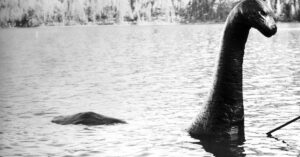
 readings. It was revealed in 1994 that the now famous 1934 photo was a complete hoax, but people still believed. It did little to dampen enthusiasm of tourists and investigators for the legendary beast of Loch Ness. The search continues to this day.
readings. It was revealed in 1994 that the now famous 1934 photo was a complete hoax, but people still believed. It did little to dampen enthusiasm of tourists and investigators for the legendary beast of Loch Ness. The search continues to this day.
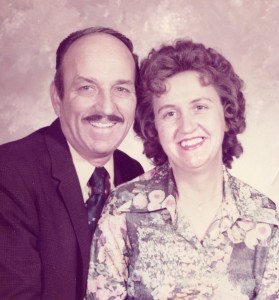 There are days when I find myself thinking more than normal about one or both of my parents, Allen and Collene Spencer, than normal, and May Day is one of the days that reminds me a lot of my mom. Mom loved the holidays, and while May Day isn’t a holiday, per se, it is a special day, and mom loved it. It was a day that she could give her girls something fun to do, while doing something fun for neighbors and friends too. Mom helped us make May baskets, fill them with candy, and told us to take them to the neighbors’ houses, hang them on the door, knock, and hide. It was the tradition of May Day, and Mom wanted us to know about it. We had so much fun making those baskets, but the real fun was in the giving of the baskets. There wasn’t a lot of candy in them. Just a few pieces, but our neighbors knew that we had left them a little bit of sweetness to brighten their day.
There are days when I find myself thinking more than normal about one or both of my parents, Allen and Collene Spencer, than normal, and May Day is one of the days that reminds me a lot of my mom. Mom loved the holidays, and while May Day isn’t a holiday, per se, it is a special day, and mom loved it. It was a day that she could give her girls something fun to do, while doing something fun for neighbors and friends too. Mom helped us make May baskets, fill them with candy, and told us to take them to the neighbors’ houses, hang them on the door, knock, and hide. It was the tradition of May Day, and Mom wanted us to know about it. We had so much fun making those baskets, but the real fun was in the giving of the baskets. There wasn’t a lot of candy in them. Just a few pieces, but our neighbors knew that we had left them a little bit of sweetness to brighten their day.

My mom was such a giving person, in so many ways. It wasn’t just May Day, or some other holiday, but really, every day. Mom gave of herself, in the kindnesses she showed, and if someone had a need, she did her best to supply that need. That was how she was raised. Her parents, George and Hattie Byer were givers, helping anyone who had a need. Their children saw that growing up, and it left a lasting impact on them too. Mom not only felt compelled to give, but she truly liked giving…from Girl Scout cookies to church to different causes she came across, Mom was a giver, and I know that she was always blessed because of it. Dad was also a giver, and they were always in agreement of these things. They taught us to be givers too, and we are all grateful for their teachings.
While May Day traditions have rather become a thing of the past, I will always remember them fondly. I think it  is sad that the May basket tradition has for the most part ceased to exist, and that makes me sad for the younger generations. Of course, with a few exceptions, most of us don’t often know our neighbors well…unless we have lived in an area for many years. Even then, people come and go, and it isn’t so easy to accept a basket of candy left on your door, unless you know for sure where it came from. It is an unfortunate side effect of the times we live in. I am thankful to have grown up in a gentler time, when May baskets could be given and received without worry about their contents, or the child giving them. Happy May Day everyone.
is sad that the May basket tradition has for the most part ceased to exist, and that makes me sad for the younger generations. Of course, with a few exceptions, most of us don’t often know our neighbors well…unless we have lived in an area for many years. Even then, people come and go, and it isn’t so easy to accept a basket of candy left on your door, unless you know for sure where it came from. It is an unfortunate side effect of the times we live in. I am thankful to have grown up in a gentler time, when May baskets could be given and received without worry about their contents, or the child giving them. Happy May Day everyone.
 I think many people realize the usefulness of a dog as something other than a pet. Over the years, there have been seeing eye dogs, service dogs, and one I hadn’t heard of before…mercy dogs. During World War I, some 50,000 dogs were “employed” by both sides of the conflict as soldiers on both sides of the conflict as mercy dogs. You might wonder just what a mercy dogs is. While it is a rather sad one, the job the dogs had was actually had a very important job in the military. During battle, these dogs were sent out to find and help wounded men on the battlefield. They were very good at their jobs.
I think many people realize the usefulness of a dog as something other than a pet. Over the years, there have been seeing eye dogs, service dogs, and one I hadn’t heard of before…mercy dogs. During World War I, some 50,000 dogs were “employed” by both sides of the conflict as soldiers on both sides of the conflict as mercy dogs. You might wonder just what a mercy dogs is. While it is a rather sad one, the job the dogs had was actually had a very important job in the military. During battle, these dogs were sent out to find and help wounded men on the battlefield. They were very good at their jobs.
On their backs, the dogs carried medical supplies. They sought out injured soldiers. If a soldier was gravely wounded, the dogs would tear off a piece of his uniform, carry it back to camp, and help other soldiers to locate the man. Sometimes, the dogs found men who were beyond saving. In that case, they lay down next to him, so that the dying soldier didn’t have to die alone. These were true acts of mercy, and these dongs had true compassion for these men.
Mercy dogs were also known as ambulance dogs, Red Cross dogs, or casualty dogs. These dogs actually served in a paramedical role in the military…most notably during World War I, but also in World War II, and the Korean War. They have been credited with saving thousands of lives. The dogs were well trained and well suited for 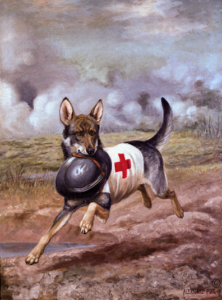 trench warfare. They were often sent out after large battles, where they would seek out wounded soldiers. They were also trained to guide combat medics to soldiers who required extensive care.
trench warfare. They were often sent out after large battles, where they would seek out wounded soldiers. They were also trained to guide combat medics to soldiers who required extensive care.
The first mercy dogs were actually trained by the German army in the late 19th century. The program to train mercy dogs in 1895 begun by Jean Bungartz in Germany was described as a “novel experiment” by those who knew about it. I’m sure they didn’t think it would actually work. Nevertheless, by 1908, Italy, Austria, and France had joined Germany in training programs for mercy dogs. Germany had around 6,000 trained dogs by the beginning of World War I. Many of the trained dogs were ambulance dogs. The German army called them Sanitätshunde or medical dogs. Germany is estimated to have used a total of 30,000 dogs during the war, mainly as messengers and ambulance dogs. Amazingly, only 7,000 of those were killed. Somehow, I would have expected there to be more deaths among the dogs. It is estimated that upwards of 50,000 dogs were successfully used by all of the nations involved in the war.
When World War I started, Britain did not have a program for training military dogs. Edwin Hautenville Richardson, who was an officer in the British Army had experience working with military dogs and had advocated for the start of a military program since 1910, but his program was not taken seriously. Nevertheless, he had trained several dogs as ambulance dogs on his own. He quickly offered them to the British Army. The army did not accept his offer, for some bizarre reason, so he gave them to the British Red Cross. As a result of his advocacy, Britain created a British War Dog School with Richardson as the commander. The school eventually trained more than 200 dogs. The British War Dog School was a grand success.

It is estimated that as many as 10,000 dogs served as mercy dogs in World War I, and are credited with saving thousands of lives, including at least 2,000 in France and 4,000 wounded German soldiers. There were several dogs that were specifically honored for their work. “Captain” was credited for finding 30 soldiers in one day, and “Prusco” for finding 100 men in just one battle. Both of these were French dogs. “Prusco” was known to drag soldiers into ditches as a safe harbor while he went to summon rescuers. Sadly, many French dogs were killed in the line of duty, and the program was discontinued. I suppose they thought it was inhumane, but I’m sure the dogs knew they were doing important work.
Written by guest writer: Corrie Petersen

 What a difference a year can make. Today is my mom, Caryn Schulenberg’s birthday and I’m the lucky one to write her post this year. Every day and every year things change. We never know what to expect next, but that’s ok because surprises are always fun.
What a difference a year can make. Today is my mom, Caryn Schulenberg’s birthday and I’m the lucky one to write her post this year. Every day and every year things change. We never know what to expect next, but that’s ok because surprises are always fun.
This last year has been full of changes in our family. The true blessing is that my mom has been here to be a part of all the changes. She was able to help welcome two more great grandsons, courtesy of my two sons, Chris and Josh Petersen and their wives, Karen and Athena. She was able to take several vacations with my dad, Bob 
 Schulenberg and most recently she was able to help my great aunt, Sandy Pattan in her time of need.
Schulenberg and most recently she was able to help my great aunt, Sandy Pattan in her time of need.
While I’m sure she didn’t plan to be a caregiver again, she wouldn’t have it any other way. Caregiving is in her heart, and she is very good at it, I might add. She was a caregiver for a very long time with her parents, Allen and Collene Spencer; my dad’s parents, Walt and Joann Schulenberg; and sister, Brenda Schulenberg. I have to wonder if choosing to help my Great Aunt Sandy was a blessing in disguise for both of them…a time of victory, healing, and reconnection.

 Mom has been retired for five years now, and she is still so busy. She finds time to walk nine miles every day, write her daily blog posts, read her Bible and go to church, and spend time with her family. She and my dad go to the Black Hills over the Independance Day week to go hiking, and they take a trip to Thermopolis each year around the time of their anniversary. They also try to get to Washington every other year to visit my sister, Amy Royce, her husband Travis, and her kids, Shai and Caalab. Oh…and she bowls once a week with my dad. Boy, that makes me tired just thinking about it, but that’s her life and she wouldn’t want it to be any different.
Mom has been retired for five years now, and she is still so busy. She finds time to walk nine miles every day, write her daily blog posts, read her Bible and go to church, and spend time with her family. She and my dad go to the Black Hills over the Independance Day week to go hiking, and they take a trip to Thermopolis each year around the time of their anniversary. They also try to get to Washington every other year to visit my sister, Amy Royce, her husband Travis, and her kids, Shai and Caalab. Oh…and she bowls once a week with my dad. Boy, that makes me tired just thinking about it, but that’s her life and she wouldn’t want it to be any different.
Today is my mom’s birthday and I hope she has the best day ever. I love you to the moon and back, mom.

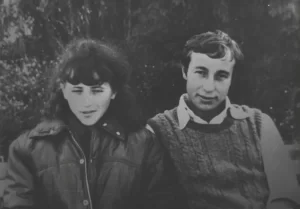 On April 26, 1986, an explosion in the Number 4 reactor of the Chernobyl Nuclear Power Plant, near the city of Pripyat in the north of the Ukrainian SSR, close to the border with the Byelorussian SSR, in the Soviet Union. So began what is considered the worst nuclear disaster in history. The Chernobyl disaster is one of only two nuclear energy accidents that was rated at seven, which is maximum severity on the International Nuclear Event Scale. The other one was the 2011 Fukushima nuclear accident in Japan, which of course, hadn’t happened yet. The cost of this disaster would be an enormous cost an estimated 18 billion roubles, which is roughly US$83 billion today. The initial emergency response and subsequent mitigation efforts involved more than 500,000 personnel. With all that, it is considered the worst nuclear disaster in history. Strange how the 4th worst disaster can also be considered the worst. I suppose it is in the cost to mitigate the damage and loss of life.
On April 26, 1986, an explosion in the Number 4 reactor of the Chernobyl Nuclear Power Plant, near the city of Pripyat in the north of the Ukrainian SSR, close to the border with the Byelorussian SSR, in the Soviet Union. So began what is considered the worst nuclear disaster in history. The Chernobyl disaster is one of only two nuclear energy accidents that was rated at seven, which is maximum severity on the International Nuclear Event Scale. The other one was the 2011 Fukushima nuclear accident in Japan, which of course, hadn’t happened yet. The cost of this disaster would be an enormous cost an estimated 18 billion roubles, which is roughly US$83 billion today. The initial emergency response and subsequent mitigation efforts involved more than 500,000 personnel. With all that, it is considered the worst nuclear disaster in history. Strange how the 4th worst disaster can also be considered the worst. I suppose it is in the cost to mitigate the damage and loss of life.
Volodymyr Pavlovych Pravyk was a Soviet firefighter, was born in the town of Chernobyl on June 13, 1962. His mother, Natalia Ivanova Pravyk, was a nurse, and his father, Pavel Opanasovich Pravyk, a construction worker. Pravyk took charge of the initial efforts to extinguish fires following the Chernobyl Disaster. I don’t know what measures were taken to protect the workers from radiation exposure, but I would expect that it was little to no protection. I would also expect that the equipment they did have was not what it needed to be to save them from radiation poisoning. After the event was over, Pravyk was hospitalized with acute radiation syndrome. For him, any improvements in protection would come too late. He died on May 11, 1986, just sixteen days later. Even though they could not save him, they knew that his actions were heroic. Pravyk was posthumously awarded the Hero of the Soviet Union and the Order of Lenin by the Soviet Union, and later the Ukrainian Star For Courage (later known as the Order for Courage) in recognition of his efforts.
It was later determined that a routine test at the power plant had gone horribly wrong, causing two massive 
 explosions that blew the 1,000-ton roof off one of the plant’s reactors. The explosions released 400 times more radiation than the atomic bomb dropped on Hiroshima. The disaster killed two workers in the initial explosions. Within months, at least 28 more would be dead by acute radiation exposure. Thousands of people would eventually show signs of health effects from the fallout, including cancer.
explosions that blew the 1,000-ton roof off one of the plant’s reactors. The explosions released 400 times more radiation than the atomic bomb dropped on Hiroshima. The disaster killed two workers in the initial explosions. Within months, at least 28 more would be dead by acute radiation exposure. Thousands of people would eventually show signs of health effects from the fallout, including cancer.
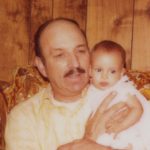
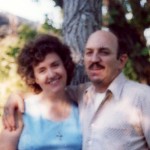 Since my Dad, Allen Spencer’s passing, our family has grown more than he probably ever could have imagined. He would be so pleased with the new spouses and all the new great great grandchildren he and my mom, Collene Spencer have now. Mom and Dad loved their family, and they always thought of children as a blessing from God. Dad loved playing with the little kids. He didn’t even have to get out of his chair. He sat in the kitchen, right beside the door. They kids would run past him while trying not to get swatted. Dad on the other hand tried to swat them before they could get past him. I can’t say who the biggest winner or loser was, but with all the loud screams and laughter, Mom would eventually get enough of the noise, and tell Dad to stop…good naturedly, and often while laughing. Still, I’m sure the noise got annoying at times. The little kids we have now, will never know their great great grandparents, until they go to Heaven anyway, and I find that very sad. They miss so much.
Since my Dad, Allen Spencer’s passing, our family has grown more than he probably ever could have imagined. He would be so pleased with the new spouses and all the new great great grandchildren he and my mom, Collene Spencer have now. Mom and Dad loved their family, and they always thought of children as a blessing from God. Dad loved playing with the little kids. He didn’t even have to get out of his chair. He sat in the kitchen, right beside the door. They kids would run past him while trying not to get swatted. Dad on the other hand tried to swat them before they could get past him. I can’t say who the biggest winner or loser was, but with all the loud screams and laughter, Mom would eventually get enough of the noise, and tell Dad to stop…good naturedly, and often while laughing. Still, I’m sure the noise got annoying at times. The little kids we have now, will never know their great great grandparents, until they go to Heaven anyway, and I find that very sad. They miss so much.
My sisters and I will always be thankful for the wonderful parents we were blessed with. We always knew that no matter what mistakes we made, we always had their love. Dad was the problem solver. My early school years found me struggling with two subjects that would later become my favorites…Mathematics and History. Mom would tell me that there would be trouble when my dad got home. I think she thought I wasn’t applying 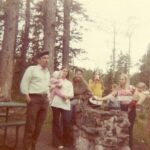
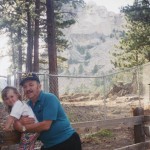 myself. Then, when my dad got home and saw the progress report, he said, “Well, I guess we will need to work on this.” We did work on it. Dad leading the way, and I ended up excelling in Mathematics, and while I did ok in history, it wasn’t my favorite subject until much later on…when I was a parent. Some people might think that I did better because my dad made me work harder, but I think he was the better teacher.
myself. Then, when my dad got home and saw the progress report, he said, “Well, I guess we will need to work on this.” We did work on it. Dad leading the way, and I ended up excelling in Mathematics, and while I did ok in history, it wasn’t my favorite subject until much later on…when I was a parent. Some people might think that I did better because my dad made me work harder, but I think he was the better teacher.
My dad loved to travel, and wanted to show his girls just how wonderful this nation we lived in really was. We traveled and camped out every summer. When we went back to school and the teachers asked what we had done over the summer, we always told them about our trips. The teachers told us we were blessed to get to go so many places…and we were. Most of us have been to almost all the 50 states, with just a few exceptions, but there is still time for us, so that could change. We definitely got our love of travel from our parents, and for that we are all grateful. It is something that has enriched our lives greatly.
Of course, we also got our faith from our parents. No matter what things we faced, we knew that God was with us and that everything would be ok. We went to church regularly, and we watched our parents use their faith in 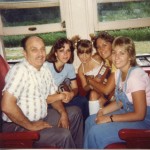
 every situation. We will always be thankful for that Christian upbringing. It shaped the strong women we have become. These days, our upbringing continues to make us the people we are. We try to be kind and loving, just like our parents. If we can grow to be even half the people they were, I would say that they were successful in raising us. Today would have been my dad’s 100th birthday. I wish he had been able to be here to celebrate with us. Nevertheless, today we celebrate his life, and we thank God for giving him to us. Happy birthday in Heaven, Dad. We love and miss you every day and very much.
every situation. We will always be thankful for that Christian upbringing. It shaped the strong women we have become. These days, our upbringing continues to make us the people we are. We try to be kind and loving, just like our parents. If we can grow to be even half the people they were, I would say that they were successful in raising us. Today would have been my dad’s 100th birthday. I wish he had been able to be here to celebrate with us. Nevertheless, today we celebrate his life, and we thank God for giving him to us. Happy birthday in Heaven, Dad. We love and miss you every day and very much.

